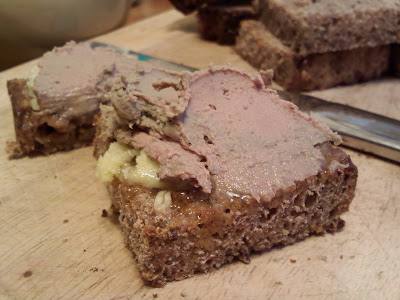
I've recently become a big fan of broth. Well, okay, so I've been a fan of broth for a long time, but now I want to eat it every day, pretty much just straight up. Bone broth is so warming, sustaining, and delicious in these cold, snowy months -- there is really nothing like it! And of course, in addition to being tasty and comforting, it's also an excellent source of gelatin which serves to attract digestive juices to the food in our stomachs, which makes it the perfect thing to serve before a winter meal. (Winter meals generally contain mainly cooked foods which repel digestive juices, but including gelatin in the form of broth remedies this problem.)
These days I am still making stock about once a week, and for a while now I've been alternating between chicken, beef, shrimp, and fish, generally keeping a Mason jar or two in the fridge all the time for a quick meal. I like to chop onions, garlic, scallions, shallots, or leeks and throw them in the pot while I heat the broth. Ginger is also a good addition, though you have to use it sparingly. In January I made my first oxtail soup (pho style) and it has quickly become my favorite thing, served with extra fish sauce, chili sauce, and hoisin sauce (though I leave these out when serving to Oliver).
So that's my tip: make stock weekly, freeze most of it but keep some always thawed in your fridge, pour a few cups in your smallest pot, add some freshly-chopped aromatics (or shrimp butter if making a fish or shrimp broth), and boil briefly. Technically this could hardly be called soup, I suppose...but still, it's a great meal starter, and if you wanted something heartier you could add some beans, brown rice, greens, or winter vegetables as well -- even frozen meatballs or sliced sausage.
We will be covering most of the dishes I've mentioned in my upcoming cooking series.
Just for the heck of it, here's a picture of Oliver post-oatmeal yesterday morning (note the great lighting of our brand new kitchen! we moved last Sunday).






